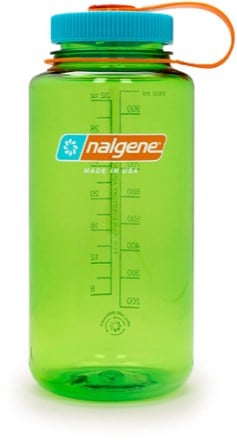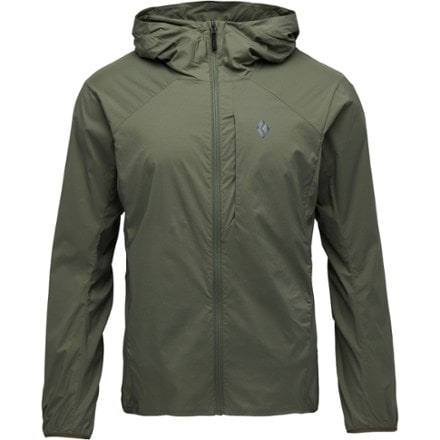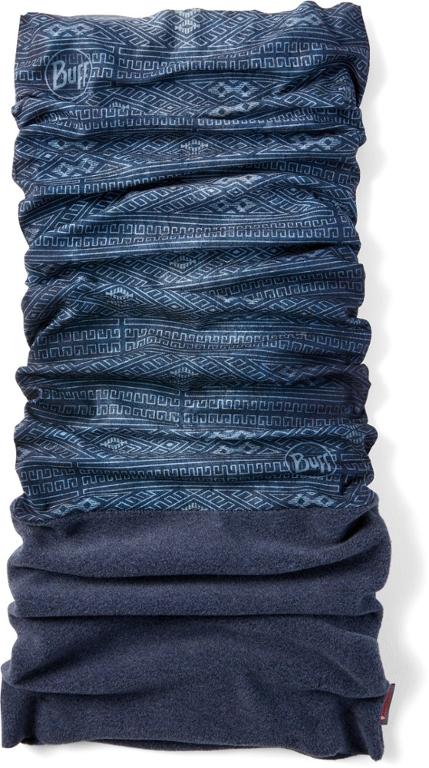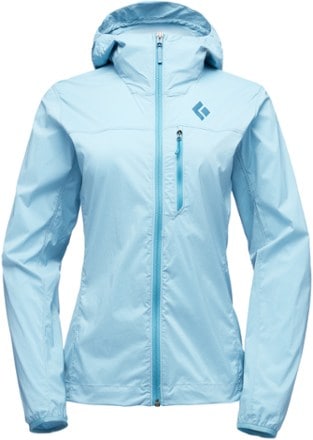Climbing Pico de Orizaba via the North Jamapa Glacier Route: The Tallest Peak in México
Distance: 4.5 - 5.2 miles / 7.2 - 8.4 km
Standing atop the Trans-Mexican Volcanic Belt, Pico de Orizaba is famously known not only for being the tallest peak in México but also the tallest volcano in all of North America!
That being said, the appeal to climb Pico de Orizaba comes obvious among outdoor enthusiasts from around the world because of its proximity to México City, its 'fairly easy' ascent, which can be completed in one long day, and the fact that the climb up the North Jamapa Glacier isn’t overly technical, with the exception of a few glacier-related skills.
This is to say that, yes, it is commonly debated whether a rope is necessary to climb Pico de Orizaba via the Jamapa Glacier, but from my knowledge, there are at least two known crevasses—and likely more—so use your own discretion.
In any case, Pico de Orizaba, by way of the Jamapa Glacier, is a very fun, beautiful, and extremely rewarding climb—especially if it’s your first time climbing to these high elevations!
What is the Best Time of Year to Climb Pico de Orizaba?
The best time of year to climb Pico de Orizaba is during México’s dry season, which runs from November to March.
This may seem counterintuitive to what the winter months look like in the Mountain West across the United States, but November to March in Mexico typically means bright, sunny days, little precipitation, and fairly mild temperatures. This is important because it’s best to climb the Jamapa Glacier when there is sufficient snow across it—not just blue ice!
Is a Guide Necessary to Climb Pico de Orizaba?
This answer is: it depends.
It first depends on whether you’re driving around México and what type of vehicle you have because a high-clearance 4WD vehicle is required to reach the North Refuge. Additionally, it depends on your ability and experience with high-elevations climbs and all things related to glacier travel.
The Jamapa Glacier is, without a doubt, one of the easier glaciers to learn and practice various skills on, but that’s not to say it should be taken for granted. There are crevasses, regardless of what some may say, which I discuss in more detail below.
If you are a qualified, self-sufficient group but lack the vehicle needed to reach the refuge, then climbing Pico de Orizaba can be as simple as finding a local guide to drive your team to the refuge and coordinating a pick-up after climbing.
This is what we did once in México, which is to say that your plans do not need to be booked too far in advance.
On a different note, one of my favorite things about booking through Viator is the reserve-now-and-pay-later option. As long as you’re booking more than three days in advance, you have the option to book ahead and cancel in the future if you change your mind.
What are the Best Climbs to Prepare for Pico de Orizaba?
There are two widely agreed-upon climbs to prepare for the elevation on Pico de Orizaba.
1. La Malinche
In my opinion, La Malinche is arguably the more important of the two main options because it is easier and more accessible than other nearby summits, making it an ideal climb to prepare for Pico de Orizaba.
By this, I mean that La Malinche can easily be accessed from nearby Puebla, making the 14,567-ft. (4,440 m) peak one of the best and most effective climbs for gaining elevation in a relatively short amount of time.
Read My Separate Post: North La Malinche Trail
2. Iztaccíhuatl
Iztaccíhuatl is one that I look at as optional when trying to climb Pico de Orizaba.
What I mean is that if you are very unsure about your fitness and ability to acclimatize, plan for Iztaccíhuatl. There’s no denying that climbing above 17,100 ft. (5,212 m) will help for the 18,491-ft. (5,636 m) summit atop Pico de Orizaba, but that’s not to say that it isn’t a burden.
In my opinion, Iztaccíhuatl is poorly managed compared to La Malinche, and the reservation system in order to drive to the La Joya Trailhead is a bit ridiculous.
Essentially, the hours online to get a reservation at the visitor center are unreliable, meaning that the only true way to climb Iztaccíhuatl is to arrive well before closing the day prior and camp at the trailhead upon paying for a reservation.
When we encountered all the headaches involved, including a bumpy 4WD road to reach either the north or south trailhead, it’s safe to say that we decided that Iztaccíhuatl wasn’t worth the effort. The easy accessibility of La Malinche, along with sleeping in the refuge on Pico de Orizaba, was more than enough acclimatization for our summit attempt—so, we said that if we weren’t up for Orizaba by the time we reached the Jamapa Glacier, we would treat our first attempt as an acclimatization hike with the idea of climbing again the following day.
Google Maps Directions: Paso de Cortés / La Joya (South Trailhead)
North Pico de Orizaba Trailhead Parking
Parking for the Pico de Orizaba from the North Jamapa Glacier Route depends on whether you have a high-clearance 4WD vehicle to drive to the North Refuge or are booking with a local guide to do the long, bumpy two-hour car ride.
If you are driving to the trailhead, I highly recommend downloading offline maps on Google Maps, as service is limited. If you are reserving with a local guide, they will tell you where it’s safe to park in Tlachichuca or one of the nearby towns.
Google Maps Directions: North Pico de Orizaba Trailhead
Climbing Checklist - Pico de Orizaba
Here is a complete list of must-have things that you will want for any climb up the Jamapa Glacier on Pico de Orizaba.
1L Nalgene Water Bottle & Parka - If I recommended my favorite Osprey 3L Water Bladder, it’s likely that the hose would freeze in the cold conditions. This is why a Nalgene water bottle with a water bottle parka is needed to insulate the bottle, as I’ve had Nalgene bottles freeze on me without a parka.
Smartwool Winter Mountaineering Socks - Heavy Smartwool socks are truly a must on cold winter days, which can be found in both men’s and women’s sizes.
Blister / Heel Protectors - I swear by these cheap, amazing heel protectors to prevent blisters for nearly every kind of hiking and backpacking that I do!
Black Diamond Headlamp - Personally, I recommend the Black Diamond Storm because it is one of the brightest, lightest, and longest-lasting headlamps on the market—and trust me, the weight-to-battery-life ratio really does matter!
Cold Weather Neck Buff - This cold weather neck buff is not only for staying warm but keeping the sun off, which is extremely important in reflective snowy conditions.
Glacier / Polarized Sunglasses - Quality glacier glasses with side protection are a must for whenever you’re on a bright snowfield, a glacier, and sometimes even granite. This is why I recommend the Julbo Glacier Glasses or at the minimum these polarized sunglasses, as they are both exactly what I used on my Denali expedition.
Crampons - In conditions such as this, crampons, not micro-spikes, are needed. However, the ones linked here are only one of many styles to consider, as this is really a custom in-store fitted item, so that they work well with your mountaineering boots.
Climbing Helmet - A quality climbing helmet may be the most important item on this list, which are available in both men’s and women’s sizes.
Long Handled Ice Axe - When picking out an ice axe for the first time, make sure that you know how to choose the correct size for your height.
Soft Shell Glacier Jacket - A soft-shell jacket, along with sunscreen, can be one of the most important methods of sun protection when traversing glaciers and large snowfields, which are available in both men’s and women’s sizes.
High SPF Sunscreen - Packing high-SPF sunscreen is a must for long days outside!
Winter Hat, Gloves, & Jacket - This should be the easiest part of this list to follow.
Climbing Pico de Orizaba via Jamapa Glacier
For most climbers, the ascent up Pico de Orizaba begins at some point in the night, and since groups of all skill levels have different ideas about when to begin, getting sleep in the North Refuge can be a rare occurrence!
However, it depends entirely on how busy the mountain is, with weekends reportedly being busier than weekdays.
That being said, some climbers began leaving the refuge as early as 10:30 p.m., while we began our climb around midnight. It really is a balance to time your ascent, as some groups climbed too fast and ended up leaving the summit while it was still dark, whereas we were able to catch the sunrise on the upper glacier and summit just after sunrise.
To figure out your plan, try to aim for sunrise either where we were or higher, without arriving too early.
This is all to say that, on the Jamapa Glacier—or any glacier, for that matter—it’s best to try to get off the snow as soon as possible to avoid the harsh and dangerous reflections that can cause severe sunburn from spending too much time on the white surface.
The North Route up Pico de Orizaba begins along an awkward aqueduct for the first 0.2 miles (0.3 km) before branching away at the beginning of the Labyrinth.
Arguably, one of the most dangerous things about Pico de Orizaba could be accidentally stepping into these deep holes in the dark and ending your climb early!
The Labyrinth
When the trail breaks away from the deteriorating aqueduct, the Labyrinth begins.
That said, the hike through the Labyrinth isn’t as confusing as others may make it seem. There may be more than one route, but all routes eventually converge between the north ridge of Lengüeta and an unnamed rock band in the middle of the Labyrinth.
Simply keep in mind that, as long as you have the most prominent ridge on your right in the photo below, you’re hiking in the right direction.
Some climbers may prefer to carry poles for the long and steep hike back down to the North Refuge upon summiting.
I’m not sure what this is trying to say, but there is a trail that runs right past this rock.
At the top of the long, steep initial slope, all the various routes up the beginning sections of the Labyrinth start to converge at this unnamed rock band on the left-hand side of the photo below.
This is roughly where the trail crosses above 15,000 ft. (4,572 m).
It was roughly around 15,200 ft. (4,632 m) that most groups were putting on or taking off crampons.
Now, my universal crampons do bring up an interesting point about what shoes or boots I chose to wear, but basically, I kept debating back and forth whether I wanted to wear bigger mountaineering boots or good hiking shoes with multiple big socks and these universal crampons.
I ultimately decided to go with the hiking shoes the morning of the climb because the summit was calling for 25° F (-3.9° C) at its coldest, so I knew I would be thankful for the smaller shoes and not carrying my boots in my pack on the way down.
Some might see this as irresponsible for these elevations—and I certainly thought this myself—but I figured if it ever became too dangerous in the night, I could just turn back down.
Once the climb became solid snow, it started to feel much easier to ascend.
However, I can see others having a different story if you’re among the first climbers to go up after recent snowfall.
This is a much closer view of the rock band and the north ridge of Lengüeta, which can serve as a good mental checkpoint when climbing at night!
After the North Route up Pico de Orizaba climbs above the rock band, the rest of the Labyrinth becomes much easier to visualize as it winds its way up the steep slopes shown in the photos below.
Remember to wear some form of hooded sun protection for the hike back down!
This, along with glacier glasses, can be among the most important pieces of gear you carry on any snowy or glaciated climb.
These sections certainly don’t move fast in the night!
This is the view, looking back down from the upper elevations of the Labyrinth.
This is where the trail climbs above 16,000 ft. (4,877 m).
After roughly 1.4 miles (2.3 km), the North Pico de Orizaba Route climbs above the Labyrinth and begins the transition up to the Jamapa Glacier, about 400 ft. (122 m) up the mountain.
Shortly after reaching the top of the Labyrinth, the North Route makes a hard right turn to continue up to the start of the Jamapa Glacier.
At this split, it really makes no difference which direction you decide to go.
In my experience, most parties seemed to be going left, but I took one way up and the other down and found that they both essentially lead to the same place at the base of the glacier.
Jamapa Glacier
Somewhere between 16,400 and 16,500 ft. (4,999–5,029 m), the Jamapa Glacier begins, which is the largest glacier on Pico de Orizaba, measuring approximately 3.5-square miles (9.1-square km).
That being said, I did not find it necessary to rope up for the first few sections on the lower glacier because the ice appeared to be very thin, if any at all.
This is roughly where we roped up on the climb up, but I didn’t see any visible crevasses for at least another 1,000 ft. (305 m).
Now, while some may say it’s not necessary to carry a rope on Pico de Orizaba, I’d say use your own discretion. I personally don’t like to take crevasses lightly—especially after reading this Orizaba story from many years ago!
This is the view down toward the lowest elevations of the Jamapa Glacier.
Yes, she’s steep, but this is also where climbers typically start cutting switchbacks in the snow, instead of climbing straight up.
I have to imagine that the Jamapa Glacier on Pico de Orizaba would be much more difficult without this nice layer of snow across the ice, as there are stories of some folks navigating up a windswept mass of blue ice.
That said, this is exactly why we planned our climb in the middle of January, as these more mild, dry months typically create the most ideal climbing conditions!
This was the most visible crevasse we saw at roughly 17,550 ft. (5,349 m), but be aware that there is at least one more somewhere between 17,900 and 18,100 ft. (5,456 – 5,517 m) that some have suggested is the bergschrund of the glacier.
This is a perfect example of how climbers have cut a much 'easier' trail up the north glacier on Pico de Orizaba.
Even though we could clearly see the top of the glacier when we first reached it at 16,500 ft. (5,029 m), it was difficult to tell how much more there was left to climb as we got closer to the top.
This is where the glacier crosses above 18,000 ft. (5,486 m), meaning there’s less than 500 ft. (152 m) to go!
Summit Caldera
At roughly 18,300 ft. (5,578 m), we finally reached the caldera atop Pico de Orizaba, where the trail turns to the right to reach the true summit on the west side of the crater.
This first peak is a false summit.
After climbing up this first false summit, the true summit becomes visible in the distance!
Pico de Orizaba
Standing at approximately 18,491 ft. (5,636 m), Pico de Orizaba holds the title of the tallest summit in México, and more notably, the tallest volcano in all of North America!
That being said, I am always amazed by how fast and relatively easy it is to reach these high-elevation summits in such a short amount of time, which, in my case, was after only four days since flying in from Hawaiʻi.
At that, 18,000 ft. (5,486 m) on Pico de Orizaba felt significantly easier than Denali at the same elevation, but I’ve been told that largely has to do with latitude more than anything.
In any case, we had some extremely beautiful weather at the top, consisting of no wind and temperatures right around 25° F (-3.9° C). However, I have to imagine that Pico de Orizaba and the surrounding climbs, like Malinche, become a bit more uncomfortable if you decide to visit during the summer months.
This is the view looking down the southwest route toward Sierra Negra.
It was one hell of a climb!
ᨒ 🤘🏼
What is the Best Place to Stay in México for Pico de Orizaba?
I think it’s bad advice to suggest that it’s necessary to stay in Tlachichuca, the town right outside of the North Pico de Orizaba Route.
I say this because the small town is extremely limited when it comes to good places to stay, good food, and outdoor stores if you need to get any last-second items.
That said, Puebla has everything!
We stayed at the Hilton Garden Inn in Puebla, which proved to be the best central location to climb La Malinche, Iztaccíhuatl (if you’re interested), and Pico de Orizaba. This is to say that it’s more than practical to check out at some time in the morning, drive over to Tlachichuca to meet your guide and drive up to the trailhead, and begin your climb at some point the following night.
You’ll have a better experience—especially better food—by staying in Puebla over anywhere closer.
More Nearby Adventures
If you’re interested in reading about some more amazing adventures nearby, check out my separate posts below!
Best Way to Find Places to Stay!
Wherever I travel, I love to start my search for places to stay on VRBO.
Even if I don’t end up booking through them, I think it’s one of the best ways to see what’s in the area!
Best Way to Book Rental Cars!
I travel quite a bit, and I know firsthand that finding a good rental car deal can be a challenge, but that’s why I recommend comparing all of your options with Discover Cars.
In short, Discover Cars is a well-known, reputable business that allows you to search for the best deal across companies, and they have the best full-refund cancellation policy I’ve ever seen, valid up to 72, or sometimes even 48, hours prior to your reservation!
Book Here: Discover Cars
Safety
Whether you’re visiting the coastal resort towns or hiking and exploring further inland, traveling to México is more about having a general awareness for safety and avoiding complacency than anything else.
By this, I mean that whenever you travel to México, common sense is the best method to ensure a safe trip. To give some basic examples: obey traffic laws as best you can, use the U.S. State Department website to check any imperative travel notices, and above all else, make smart decisions, like keeping your valuables secure and in sight.
In addition, download the Google Translate app, available on both Apple and Android, to help you as you go.
Now, I don’t say all this to suggest that leaving the resorts in México is a bad idea. In fact, almost 100% of the encounters I’ve ever had with locals over many years of travel to México have been positive, kind, and very helpful! Don’t believe everything you see on the news.
To shift to a more outdoor-oriented reference to safety, be aware that México has numerous venomous snakes, Gila Monsters, spiders, scorpions, and, yes, even Black Bears in the northern states. Therefore, it’s important to research the parts of the country you plan to visit.
As always, find the most up-to-date information and conditions on the official U.S. State Department website.
U.S. Department of State: México
Disclaimer
All information provided on this blog is for informational purposes only and is not intended to be a substitute for information or advice from qualified professionals or managing agencies.
Noah Lang Photography LLC makes no representations or warranties regarding the accuracy or completeness of the information provided here, and readers should use their own discretion, judgement, and seek professional advice where it is appropriate.
Furthermore, Noah Lang Photography LLC shall not be held responsible for any injuries, lost individuals, or legal issues arising from the use of information provided on this website, and if applicable, the above safety disclaimer should be referenced to provide a generic overview of the risks involved.
All said, the content on this blog is for the sole use of Noah Lang Photography LLC, and unauthorized use or reproduction of this content is strictly prohibited.
Disclosure
This post is not sponsored.
However, some of the links in this post are affiliate links, which means that I may earn a small commission if a purchase is made through one of those links. This commission comes at no additional cost to you, and I only recommend products that I personally use and believe will add value to my readers. Thank you for your support, which enables me to continue creating more!
To read the full privacy policy, click here.

About This Blog
Noah Lang Photography, also known as @noahawaii, is 100% reader-supported!
I do not accept guest articles or sponsored content of any kind on my blog, which is why, if you enjoy the outdoor and travel content I create, please consider buying me a coffee!
I appreciate your support, which helps me continue to keep this blog alive!




















